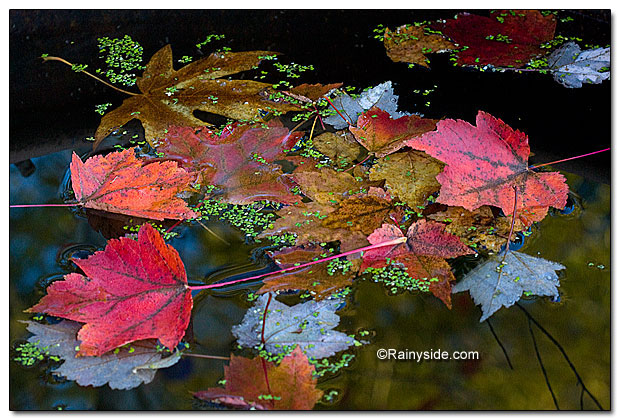Leaf Mold—turning the fallen into black gold

Debbie Teashon
Partially decayed leaves, called leaf mold, make a humus rich, very fertile mulch for our gardens. Adding this to the garden is a beneficial way to recycle leaves and build humus rich soil. The easiest way to make leaf mold is let nature take its natural course. Let the leaves rot where they fall.
In gardens where this is not practical, gather the leaves and bag them up into large black plastic garbage bags. Throw a shovelful of dirt in the bag with the leaves. Poke a few holes on the top and bottom of the bag for air circulation and drainage and let it sit out over winter. The following spring, the volume of leaves is about half of what you started with. In its place is a bag of black gold—a crumbly leaf mold with a delightful earthy scent ready to go into the garden as mulch. If you don’t want to use plastic bags gather the leaves, throw a few shovelfuls of soil on top and cover with an old holey tarp. Weight the edges down with stones or old bricks, so it won’t blow away during windstorms.
To further speed up the process of decay, add a high nitrogen organic fertilizer such as blood meal, to the bag. Mowing the leaves with a lawn mower, before bagging them, shreds the material and accelerates the decaying process. This is essential for oak and arbutus leaves that are naturally slow to break down.
If you don't have trees that give enough leaves to bag, ask your neighbors for any leaves they are bagging up to recycle. Instead, recycle them into your garden.

Gardening for the Homebrewer: Grow and Process Plants for Making Beer, Wine, Gruit, Cider, Perry, and More
By co-authors Debbie Teashon (Rainy Side Gardeners) and Wendy Tweton
Copyright Notice | Home | Search | Archives

